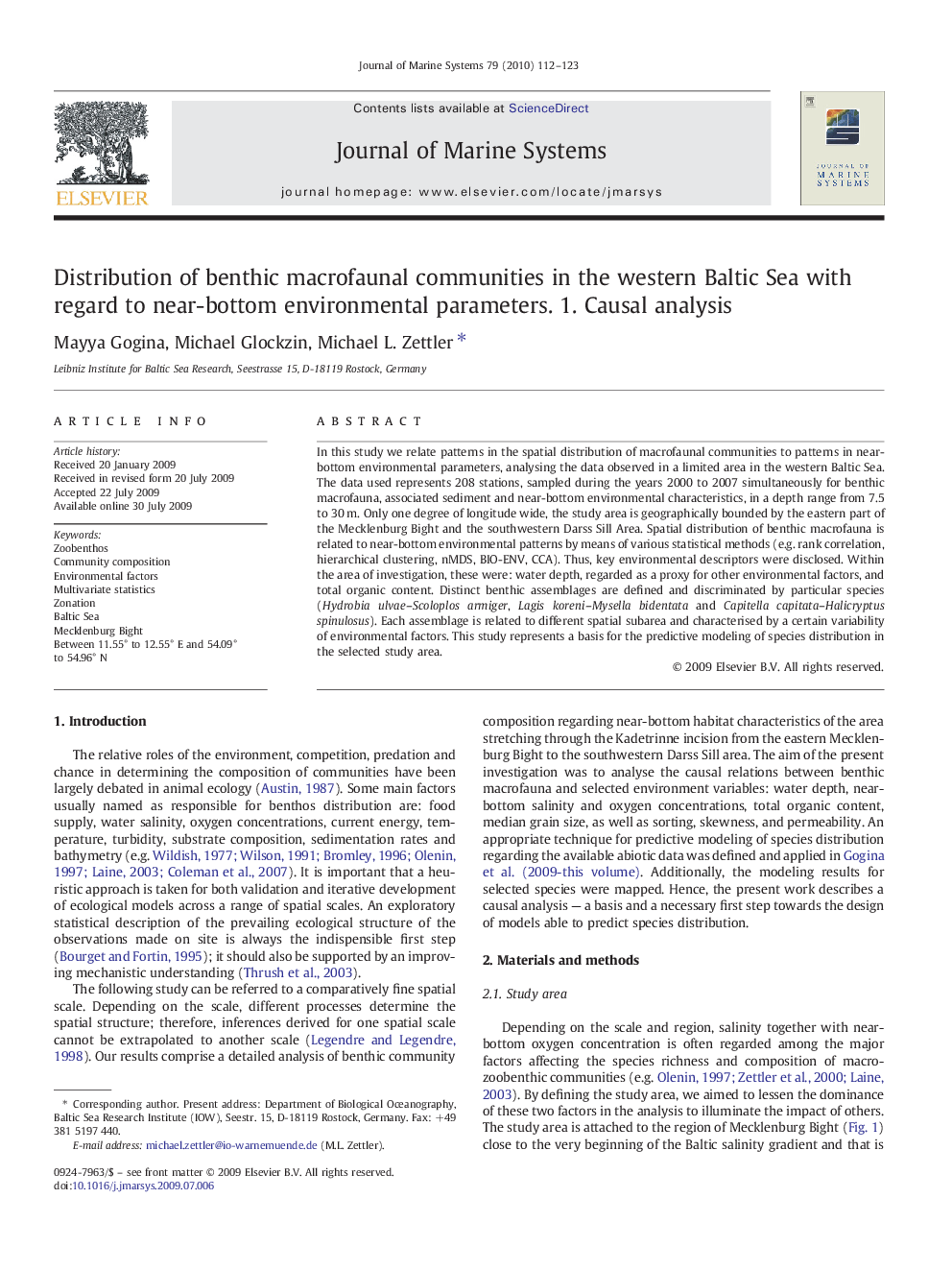| Article ID | Journal | Published Year | Pages | File Type |
|---|---|---|---|---|
| 4548713 | Journal of Marine Systems | 2010 | 12 Pages |
In this study we relate patterns in the spatial distribution of macrofaunal communities to patterns in near-bottom environmental parameters, analysing the data observed in a limited area in the western Baltic Sea. The data used represents 208 stations, sampled during the years 2000 to 2007 simultaneously for benthic macrofauna, associated sediment and near-bottom environmental characteristics, in a depth range from 7.5 to 30 m. Only one degree of longitude wide, the study area is geographically bounded by the eastern part of the Mecklenburg Bight and the southwestern Darss Sill Area. Spatial distribution of benthic macrofauna is related to near-bottom environmental patterns by means of various statistical methods (e.g. rank correlation, hierarchical clustering, nMDS, BIO-ENV, CCA). Thus, key environmental descriptors were disclosed. Within the area of investigation, these were: water depth, regarded as a proxy for other environmental factors, and total organic content. Distinct benthic assemblages are defined and discriminated by particular species (Hydrobia ulvae–Scoloplos armiger, Lagis koreni–Mysella bidentata and Capitella capitata–Halicryptus spinulosus). Each assemblage is related to different spatial subarea and characterised by a certain variability of environmental factors. This study represents a basis for the predictive modeling of species distribution in the selected study area.
